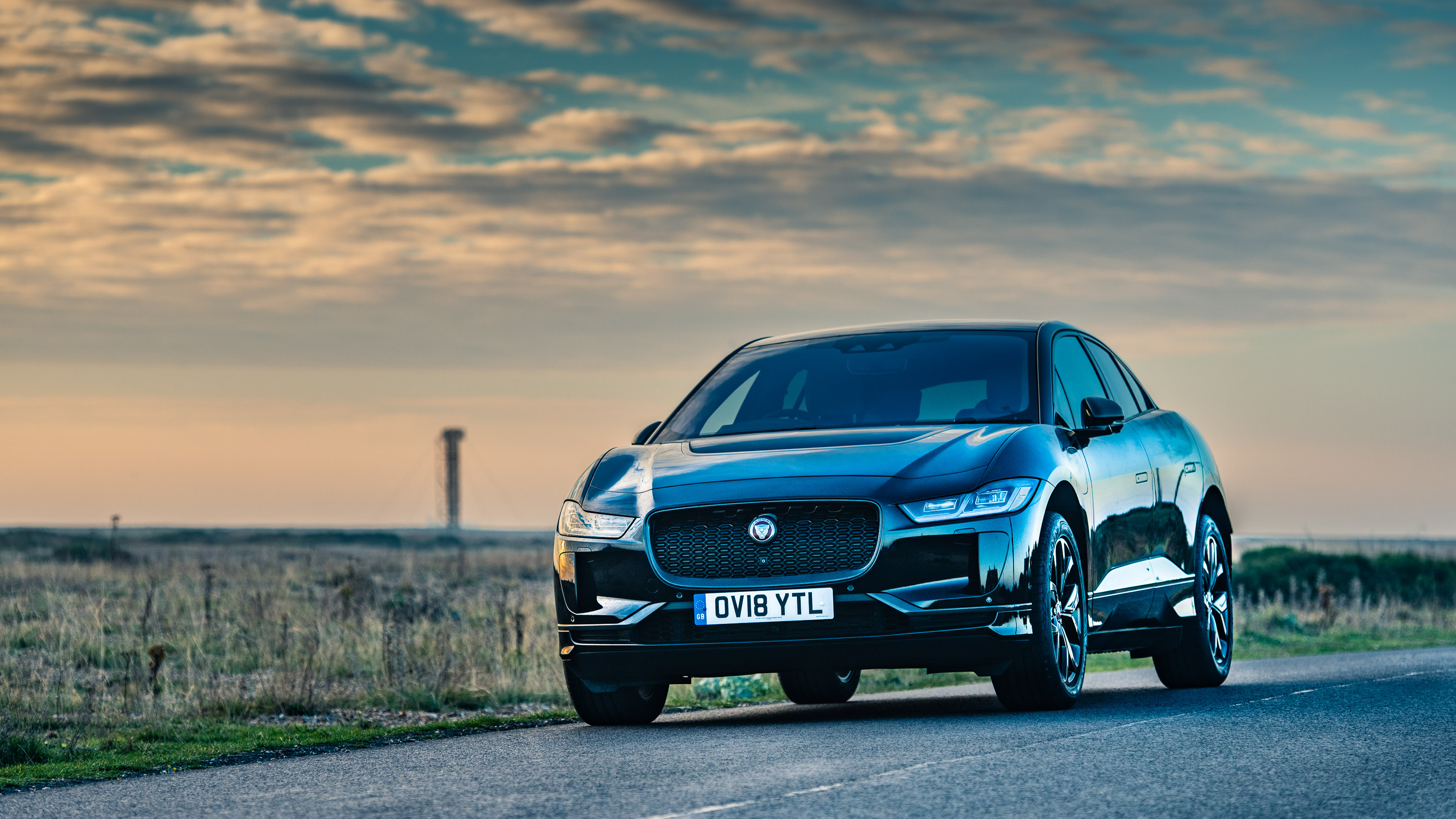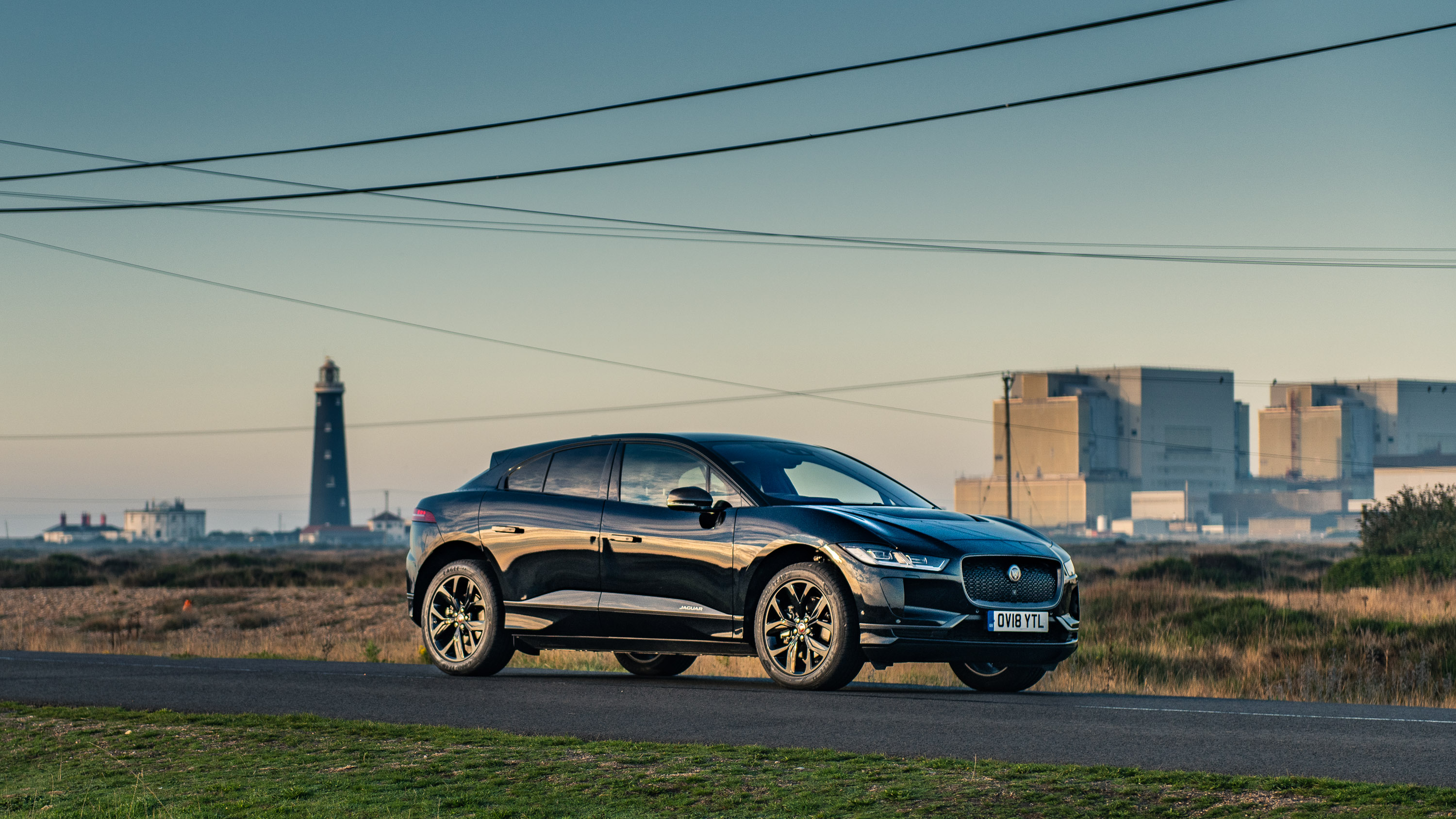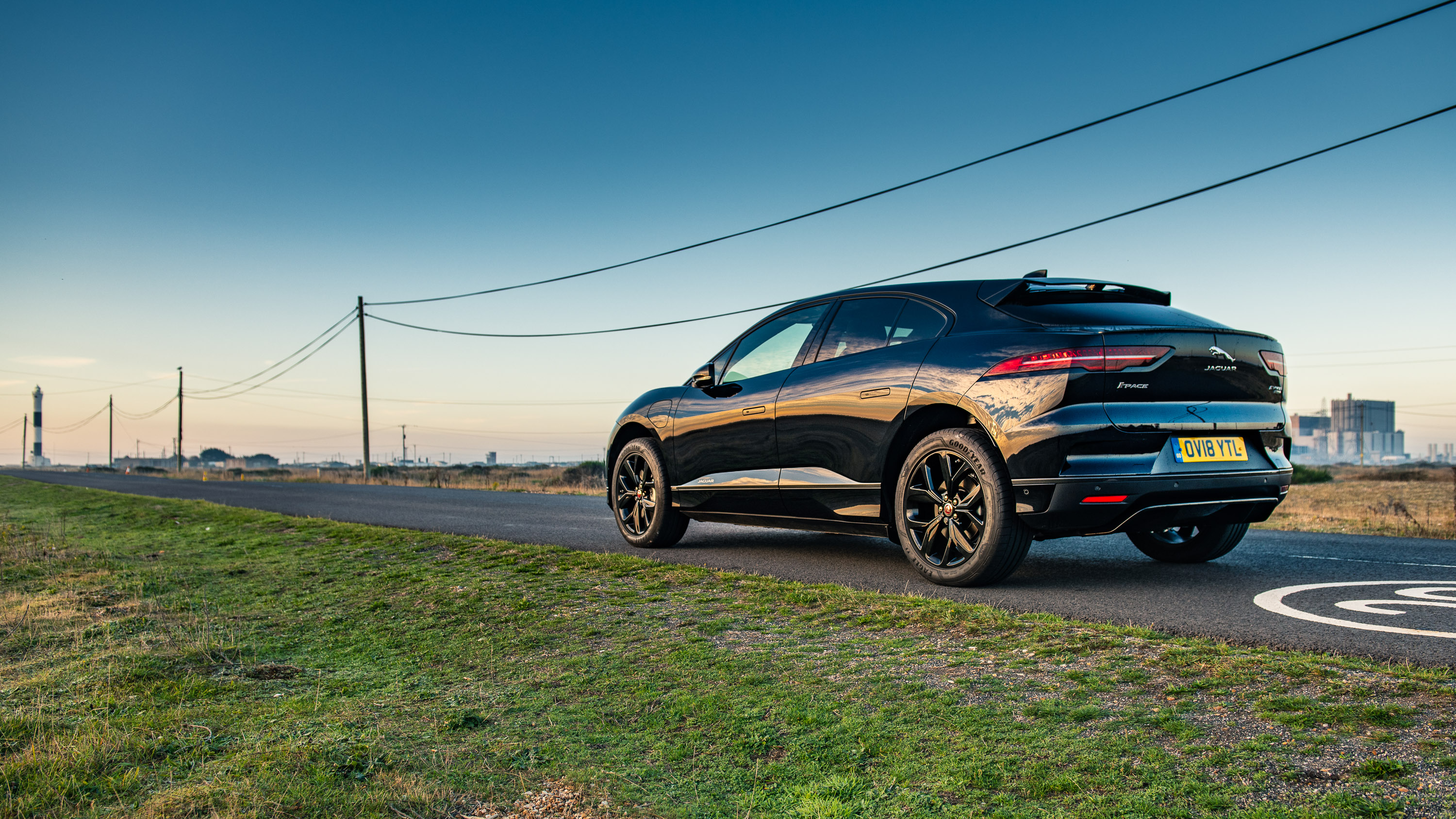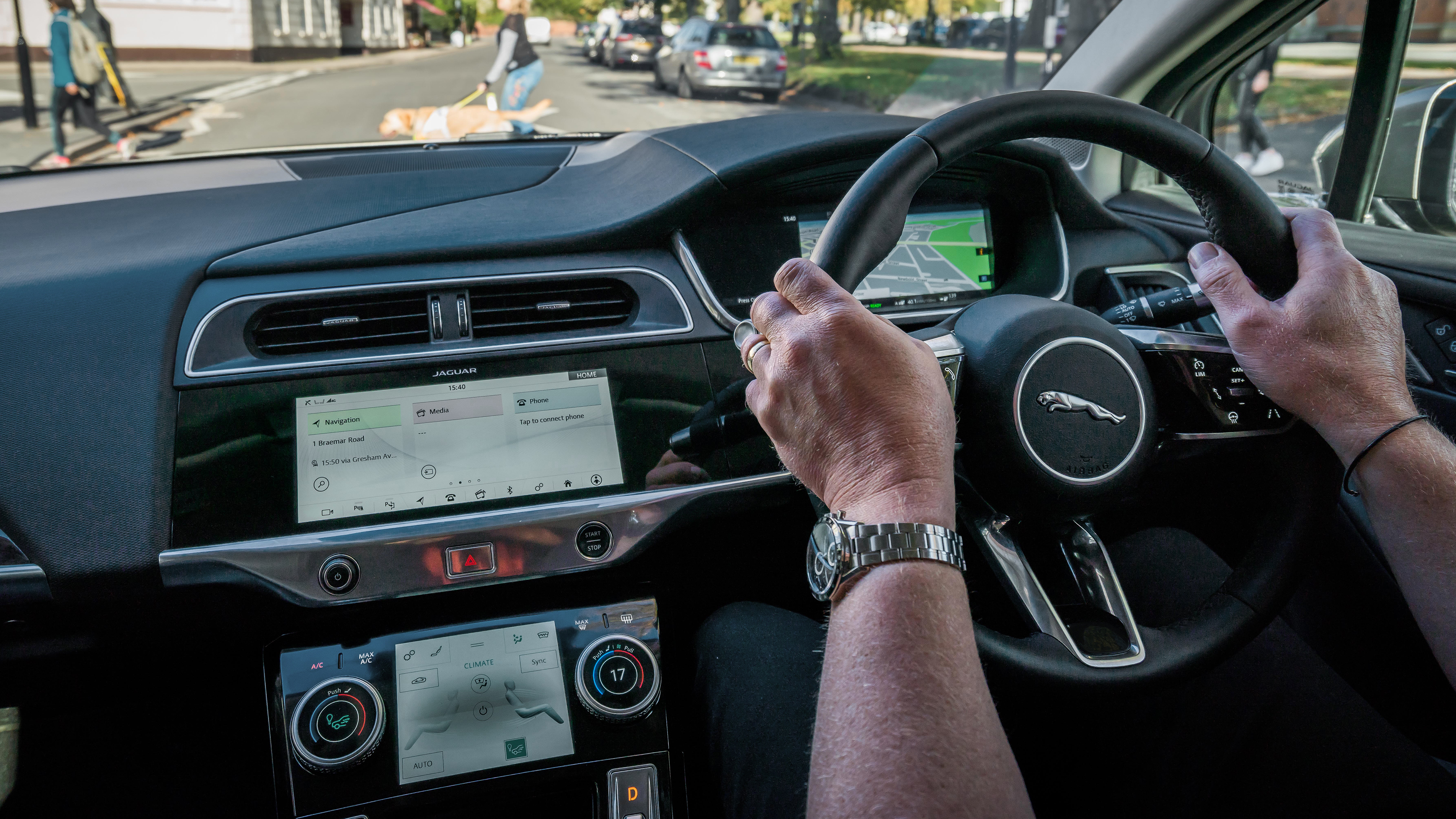
Even if you like a little bet now and again, we reckon you'd have been reluctant to put much money on Jaguar being among the first true luxury car brands to launch an all-electric car, but that's exactly what it's done – the I-Pace is the famous marque's first all-electric car, and it's a major achievement.
With its output dwarfed by that of rivals Audi, BMW and Mercedes, the cards were stacked against Jaguar. However, while we've seen some of those German giants dip their toe in the water with the likes of the BMW i3 and VW Golf-e hatchbacks, what makes the arrival of the I-Pace even more impressive is that it's the first premium all-electric SUV from an established car manufacturer. It also means it's fighting directly with Tesla's Model S.
Performance and charge times
Let's get down to the nitty gritty. The I-Pace features two permanent magnet synchronous electric motors housed to deliver constant four-wheel drive. This sees the I-Pace produce 394bhp delivered through a single-speed gearbox.
With all that power delivered instantly, you'll be able to plant your foot to the floor and out-drag a Porsche 911 Carrera (991) to 60mph (4.5 seconds versus 4.6 seconds since you ask), while the I-Pace can reach a top speed of 124mph.
The range of the large 90kWh lithium-ion battery under the floor of the I-Pace is a notable 292 miles, according to WLTP (Worldwide harmonized Light vehicle Test Procedure). This is a new process that measures fuel, energy consumption, range and emissions in passenger vehicles in Europe, and is designed to provide figures closer to real-world driving behavior.
Jaguar I-Pace HSE
Engine: 2 permanent magnet synchronous electric motors
Power output: 394bhp
Max speed: 124mph
0-62mph: 4.5 seconds
Price: I-Pace from from £62,925 (model as tested: £74,445)
While the I-Pace is compatible with Rapid 100kW chargers, which will charge your I-Pace in 45 minutes (that's from 0-80%), these are few and far between (in the UK at least). The reality is that you're going to be using a more widely available Rapid 50kW charger, which will get you from 0-80% in one hour 45 minutes. Why not 100%? Most rapid chargers reduce or cut the power well before 100% charge to protect the battery, while you also need to take into account that an EV is unlikely to require charging from 0%, unless you've had to push it onto the forecourt.
If you're looking to charge at home, you'll most likely be looking to get a Fast 7kW charger installed, which will charge all the way to 100% in 13 hours. You can also connect the I-Pace into the main via a plug socket, but with a trickle of just 3kW, be prepared for a 30-hour wait to charge the I-Pace fully from zero.
Get daily insight, inspiration and deals in your inbox
Sign up for breaking news, reviews, opinion, top tech deals, and more.
Elegant and sophisticated




Having the battery and motors tucked underneath allows the design to break away from that of more traditional SUVs, with a shorter nose and squared-off rear. The large grille on the front is a Jaguar signature, but on the I-Pace it's just for show, while the flush door handles raise out of the bodywork when you unlock the car, and retract again once you're on the move. It's an elegant-looking car, and we reckon Jaguar's design team has got the look and proportions of the I-Pace pretty much spot-on.
The relatively long wheelbase of the I-Pace means there's also plenty of space inside – there's ample room for four adults, with a decent amount of space in the boot for dogs and prams – and that's not to mention the small 27-liter boot in the front of the I-Pace.
Up front, the cockpit of the I-Pace is sleek and sophisticated, with a nice mixture of gloss black panelling, brushed metal and leather. Rather than a single gigantic display like the one in the Tesla S, the I-Pace sports three screens, along with a smattering of physical controls.
The infotainment interface is similar to the Range Rover Velar's, split over two displays in the centre console. While it's relatively intuitive to use, there's still room for improvement here, and it's not quite as responsive as we'd have liked. This is complemented by a configurable virtual cluster display behind the steering wheel.
There's also a premium Meridian sound system fitted as standard, although you can spec your I-Pace with a 825W surround sound system.
Driving and range management
A few short trips into town got us used to the effortless handling of the I-Pace, but we planned a longer 140-mile round trip to really get to grips with the car.
Once kids had been bundled in the back and the dog in the boot, we set off with a range reading of 252 miles on a chilly autumn morning. The cold start meant the heating had to be cranked up, which means range is reduced, and before getting out of town and hitting the motorway we'd used up 15 miles of charge to get just five miles.
If you're going to invest in an I-Pace you're probably going to invest in a home wall charger, which is where the I-Pace's pre-conditioning comes into play. This allows the interior of the car to be heated or cooled while the I-Pace is still hooked up to the power supply, without eating into your range.
This was a lot less stressful than we first thought, with the range decreasing a lot less rapidly than our early-morning motorway trip
With the exception of a quick boot of the accelerator pedal as we entered the motorway slip road, where the I-Pace showed how blisteringly quick it could be as it accelerated from 30 to 70mph, the rest of our drive was fairly pedestrian. With the I-Pace in Eco mode, and with gentle application of the accelerator, most of the journey seemed to revolve around looking at the distance to go and the range remaining.
We arrived out our destination with a range of 130 miles remaining – and we'd managed to chew through 120 miles for a 70-mile trip... if it was going to be a similar story for the return leg, we'd know what range anxiety feels like.
After a couple of hours at the beach and a few glances at Zap Map to check charging points for the way home we decided to take a more cross-country route home, which was also 10 miles shorter than the motorway route.
This was a lot less stressful than we first thought, with the range decreasing a lot less rapidly than on our early-morning motorway trip, and it soon became apparent that we'd have more than enough juice to get us home without a stop at a services to top up with two tired children.
The route back also allowed us to unshackle the I-Pace from the confines of its Eco mode, and enjoy the Dynamic mode, in which throttle response is that bit snappier. The I-Pace also handles very well for such a heavy car (it weighs over 2,000kg) when diving into bends, while the power delivery is impressive.
Range-wise then, things can get a touch stressful, but then this wasn't a regular daily drive. It's not really the I-Pace's fault either, with the charging infrastructure (in the the UK at least) holding the car back on longer journeys. Fit a wall charger at home, though, and you'll be sorted for regular runs to work or the shops, or short blasts just for fun, without a care in the world.
Verdict
The I-Pace is a brilliant car, whether you view it as an EV or and SUV. It has a forward-looking design that's still recognizably Jaguar, while sporting a fresh, modern interior with plenty of space.
It's also incredibly accessible and easy to drive, with super-smooth power delivery thanks to the absence of any gears – some might worry that the lack of a gearbox would make for a rather sterile driving experience, but any such reservations are soon banished by the blistering performance delivered by the I-Pace's two motors.
The I-Pace is a stunning achievement, and one that signals the end of Tesla's monopoly on premium electric cars.
Phil Hall is an experienced writer and editor having worked on some of the largest photography magazines in the UK, and now edit the photography channel of TechRadar, the UK's biggest tech website and one of the largest in the world. He has also worked on numerous commercial projects, including working with manufacturers like Nikon and Fujifilm on bespoke printed and online camera guides, as well as writing technique blogs and copy for the John Lewis Technology guide.
